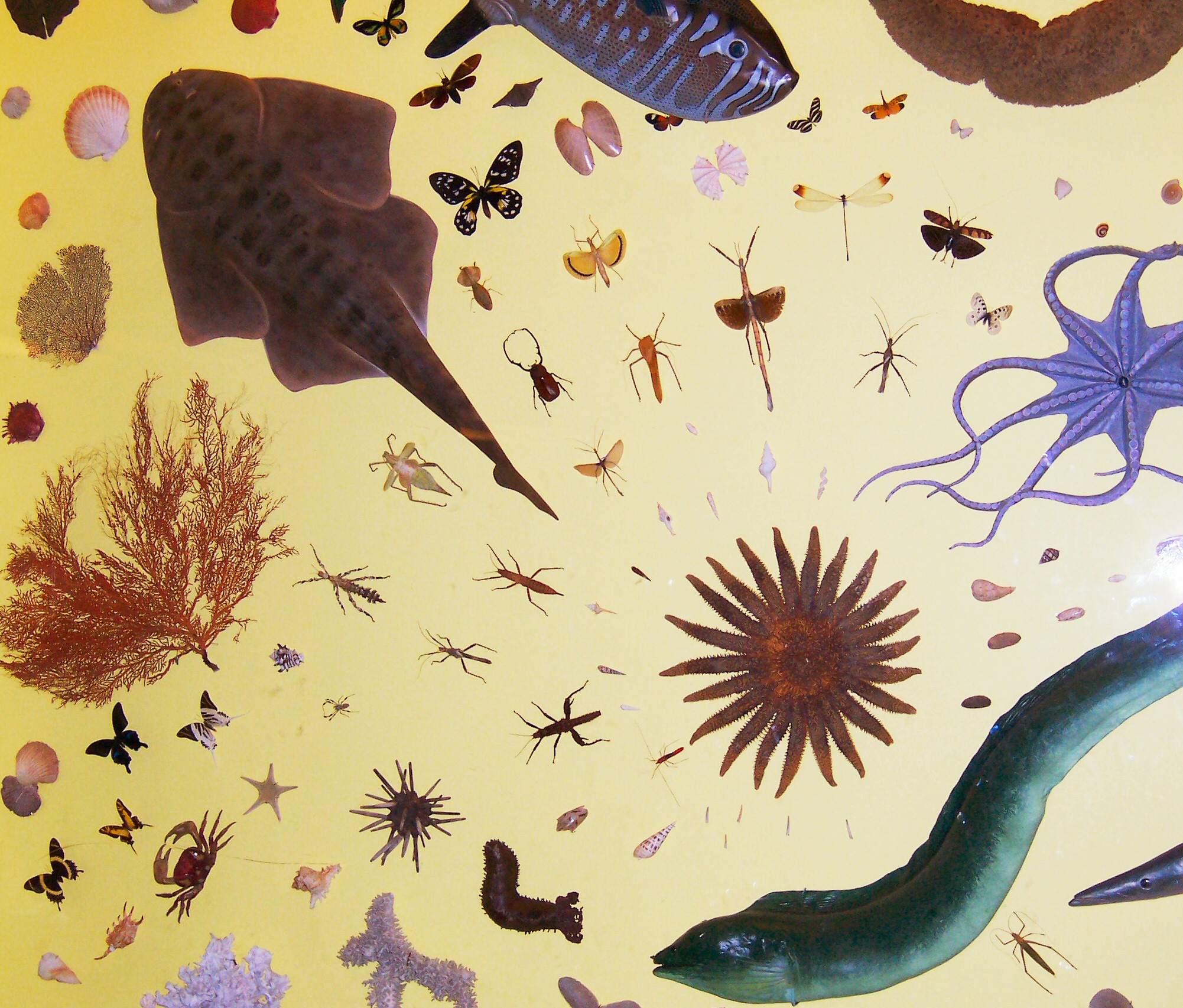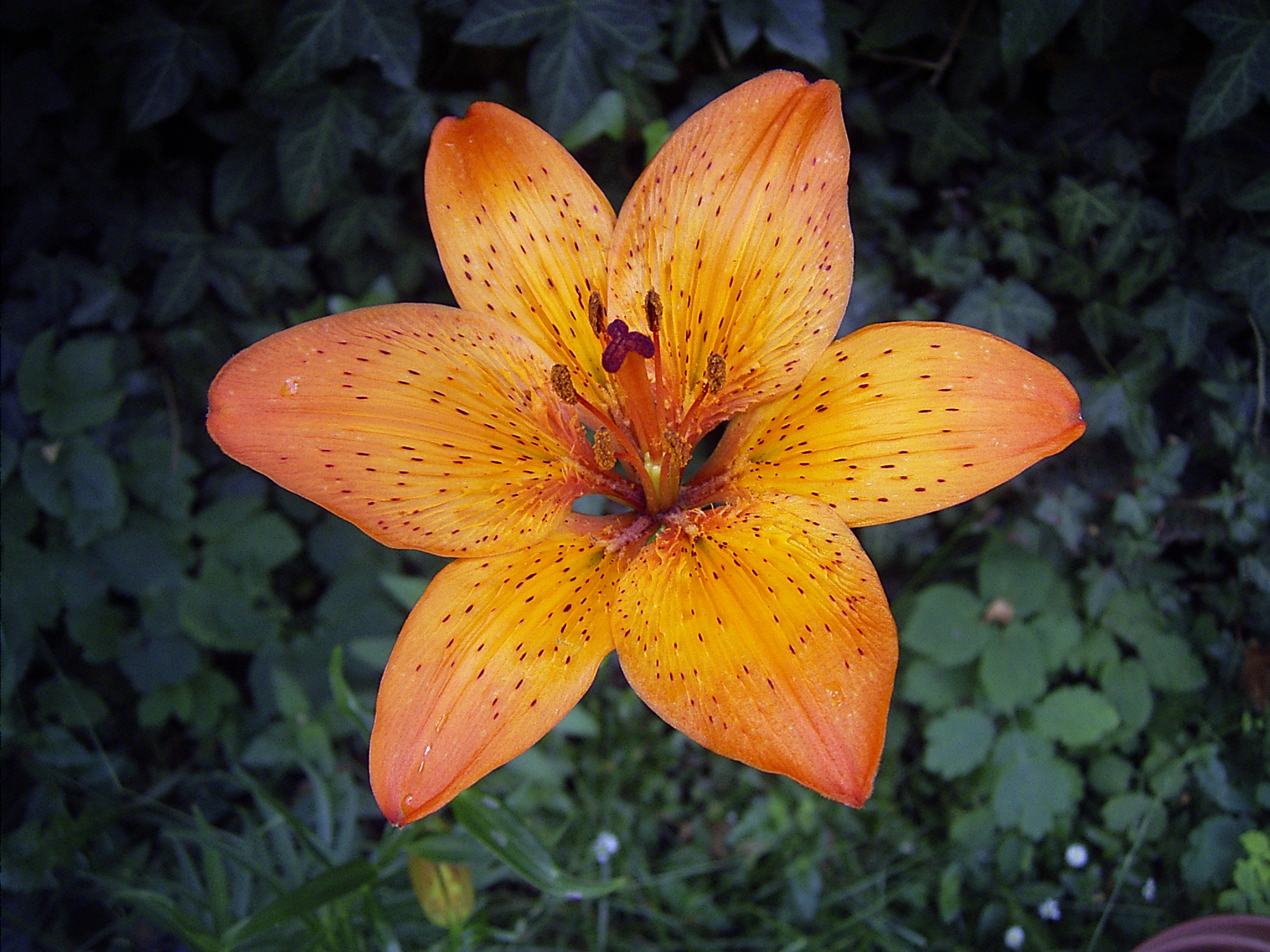|
Cellularization
In evolutionary biology, the term cellularization (cellularisation) has been used in theories to explain the evolution of cells, for instance in the ''pre-cell theory'', dealing with the evolution of the first cells on this planet, and in the ''syncytial theory'' attempting to explain the origin of Metazoa from unicellular organisms. Processes of cell development in multinucleate cells ( syncytium, plural syncytia) of animals and plants are also termed cellularization, often called ''syncytium cellularization''. The pre-cell theory According to Otto Kandler's pre-cell theory, early evolution of life and primordial metabolism (see Iron-Sulfur world hypothesis - metabolism first scenario, according to Wächtershäuser) led to the early diversification of life through the evolution of a multiphenotypical population of pre-cells, from which the three founder groups A, B, C and then, from them, the precursor cells (here named proto-cells) of the three domains of life emerged s ... [...More Info...] [...Related Items...] OR: [Wikipedia] [Google] [Baidu] |
Iron–sulfur World Hypothesis
The iron–sulfur world hypothesis is a set of proposals for the origin of life and the early evolution of life advanced in a series of articles between 1988 and 1992 by Günter Wächtershäuser, a Munich patent lawyer with a degree in chemistry, who had been encouraged and supported by philosopher Karl R. Popper to publish his ideas. The hypothesis proposes that early life may have formed on the surface of iron sulfide minerals, hence the name. It was developed by retrodiction (making a "prediction" about the past) from extant biochemistry (non-extinct, surviving biochemistry) in conjunction with chemical experiments. Origin of life Pioneer organism Wächtershäuser proposes that the earliest form of life, termed the "pioneer organism", originated in a volcanic hydrothermal flow at high pressure and high (100 °C) temperature. It had a composite structure of a mineral base with catalytic transition metal centers (predominantly iron and nickel, but also perhaps cobalt, manga ... [...More Info...] [...Related Items...] OR: [Wikipedia] [Google] [Baidu] |
History Of Life
The history of life on Earth traces the processes by which living and extinct organisms evolved, from the earliest emergence of life to the present day. Earth formed about 4.5 billion years ago (abbreviated as ''Ga'', for '' gigaannum'') and evidence suggests that life emerged prior to 3.7 Ga. The similarities among all known present-day species indicate that they have diverged through the process of evolution from a common ancestor. The earliest clear evidence of life comes from biogenic carbon signatures and stromatolite fossils discovered in 3.7 billion-year-old metasedimentary rocks from western Greenland. In 2015, possible "remains of biotic life" were found in 4.1 billion-year-old rocks in Western Australia. There is further evidence of possibly the oldest forms of life in the form of fossilized microorganisms in hydrothermal vent precipitates from the Nuvvuagittuq Belt, that may have lived as early as 4.28 billion years ago, not long after the oceans formed 4.4 ... [...More Info...] [...Related Items...] OR: [Wikipedia] [Google] [Baidu] |
Peptidoglycan
Peptidoglycan or murein is a unique large macromolecule, a polysaccharide, consisting of sugars and amino acids that forms a mesh-like layer (sacculus) that surrounds the bacterial cytoplasmic membrane. The sugar component consists of alternating residues of β-(1,4) linked N-Acetylglucosamine, ''N''-acetylglucosamine (NAG) and N-Acetylmuramic acid, ''N''-acetylmuramic acid (NAM). Attached to the ''N''-acetylmuramic acid is an oligopeptide chain made of three to five amino acids. The peptide chain can be cross-linked to the peptide chain of another strand forming the 3D mesh-like layer. Peptidoglycan serves a structural role in the bacterial cell wall, giving structural strength, as well as counteracting the osmotic pressure of the cytoplasm. This repetitive linking results in a dense peptidoglycan layer which is critical for maintaining cell form and withstanding high osmotic pressures, and it is regularly replaced by peptidoglycan production. Peptidoglycan hydrolysis and synthesis ... [...More Info...] [...Related Items...] OR: [Wikipedia] [Google] [Baidu] |
Cell (biology)
The cell is the basic structural and functional unit of all life, forms of life. Every cell consists of cytoplasm enclosed within a Cell membrane, membrane; many cells contain organelles, each with a specific function. The term comes from the Latin word meaning 'small room'. Most cells are only visible under a light microscope, microscope. Cells Abiogenesis, emerged on Earth about 4 billion years ago. All cells are capable of Self-replication, replication, protein synthesis, and cell motility, motility. Cells are broadly categorized into two types: eukaryotic cells, which possess a Cell nucleus, nucleus, and prokaryotic, prokaryotic cells, which lack a nucleus but have a nucleoid region. Prokaryotes are single-celled organisms such as bacteria, whereas eukaryotes can be either single-celled, such as amoebae, or multicellular organism, multicellular, such as some algae, plants, animals, and fungi. Eukaryotic cells contain organelles including Mitochondrion, mitochondria, which ... [...More Info...] [...Related Items...] OR: [Wikipedia] [Google] [Baidu] |
Ctenophora
Ctenophora (; : ctenophore ) is a phylum of marine invertebrates, commonly known as comb jellies, that inhabit sea waters worldwide. They are notable for the groups of cilia they use for swimming (commonly referred to as "combs"), and they are the largest animals to swim with the help of cilia. Depending on the species, adult ctenophores range from a few millimeters to in size. 186 living species are recognised. Their bodies consist of a mass of jelly, with a layer two cells thick on the outside, and another lining the internal cavity. The phylum has a wide range of body forms, including the egg-shaped cydippids with a pair of retractable tentacles that capture prey, the flat, generally combless platyctenids, and the large-mouthed beroids, which prey on other ctenophores. Almost all ctenophores function as predators, taking prey ranging from microscopic larvae and rotifers to the adults of small crustaceans; the exceptions are juveniles of two species, which live a ... [...More Info...] [...Related Items...] OR: [Wikipedia] [Google] [Baidu] |
Bilateral Symmetry
Symmetry in biology refers to the symmetry observed in organisms, including plants, animals, fungi, and bacteria. External symmetry can be easily seen by just looking at an organism. For example, the face of a human being has a plane of symmetry down its centre, or a pine cone displays a clear symmetrical spiral pattern. Internal features can also show symmetry, for example the tubes in the human body (responsible for transporting gases, nutrients, and waste products) which are cylindrical and have several planes of symmetry. Biological symmetry can be thought of as a balanced distribution of duplicate body parts or shapes within the body of an organism. Importantly, unlike in mathematics, symmetry in biology is always approximate. For example, plant leaves – while considered symmetrical – rarely match up exactly when folded in half. Symmetry is one class of patterns in nature whereby there is near-repetition of the pattern element, either by Reflection (geometry), reflect ... [...More Info...] [...Related Items...] OR: [Wikipedia] [Google] [Baidu] |
Cnidaria
Cnidaria ( ) is a phylum under kingdom Animalia containing over 11,000 species of aquatic invertebrates found both in fresh water, freshwater and marine environments (predominantly the latter), including jellyfish, hydroid (zoology), hydroids, sea anemones, corals and some of the smallest marine parasites. Their distinguishing features are an uncentralized nervous system distributed throughout a gelatinous body and the presence of cnidocytes or cnidoblasts, specialized cells with ejectable flagella used mainly for envenomation and capturing prey. Their bodies consist of mesoglea, a non-living, jelly-like substance, sandwiched between two layers of epithelium that are mostly one cell (biology), cell thick. Cnidarians are also some of the few animals that can reproduce both sexually and asexually. Cnidarians mostly have two basic body forms: swimming medusa (biology), medusae and sessility (motility), sessile polyp (zoology), polyps, both of which are radially symmetrical with mou ... [...More Info...] [...Related Items...] OR: [Wikipedia] [Google] [Baidu] |
Sponge
Sponges or sea sponges are primarily marine invertebrates of the animal phylum Porifera (; meaning 'pore bearer'), a basal clade and a sister taxon of the diploblasts. They are sessile filter feeders that are bound to the seabed, and are one of the most ancient members of macrobenthos, with many historical species being important reef-building organisms. Sponges are multicellular organisms consisting of jelly-like mesohyl sandwiched between two thin layers of cells, and usually have tube-like bodies full of pores and channels that allow water to circulate through them. They have unspecialized cells that can transform into other types and that often migrate between the main cell layers and the mesohyl in the process. They do not have complex nervous, digestive or circulatory systems. Instead, most rely on maintaining a constant water flow through their bodies to obtain food and oxygen and to remove wastes, usually via flagella movements of the so-called " collar ... [...More Info...] [...Related Items...] OR: [Wikipedia] [Google] [Baidu] |
Acoela
Acoela, or the acoels, is an order of small and simple invertebrates in the subphylum Acoelomorpha of phylum Xenacoelomorpha, a deep branching bilaterian group of animals, which resemble flatworms. Historically they were treated as an order of turbellarian flatworms. About 400 species are known, but probably many more not yet described. The etymology of "acoel" is from the Ancient Greek words (), the '' alpha privative'', expressing negation or absence, and (), meaning "cavity". This refers to the fact that acoels have a structure lacking a fluid-filled body cavity. Description Acoels are very small flattened worms, usually under in length, but some larger species, such as '' Symsagittifera roscoffensis'', may reach up to . They are bilaterally symmetric and microscopic. They are found worldwide in marine and brackish waters, usually having a benthic lifestyle, although some species are epibionts. Two species, ''Limnoposthia polonica'' and ''Oligochoerus limnophilus ... [...More Info...] [...Related Items...] OR: [Wikipedia] [Google] [Baidu] |
Germ Layer
A germ layer is a primary layer of cell (biology), cells that forms during embryonic development. The three germ layers in vertebrates are particularly pronounced; however, all eumetazoans (animals that are sister taxa to the sponges) produce two or three primary germ layers. Some animals, like cnidarians, produce two germ layers (the ectoderm and endoderm) making them diploblastic. Other animals such as bilaterians produce a third layer (the mesoderm) between these two layers, making them triploblastic. Germ layers eventually give rise to all of an animal's Tissue (biology), tissues and organ (anatomy), organs through the process of organogenesis. History Caspar Friedrich Wolff observed organization of the early embryo in leaf-like layers. In 1817, Heinz Christian Pander discovered three primordial germ layers while studying chick embryos. Between 1850 and 1855, Robert Remak had further refined the germ cell layer (''Keimblatt'') concept, stating that the external, internal ... [...More Info...] [...Related Items...] OR: [Wikipedia] [Google] [Baidu] |
Bilaterally Symmetric
Symmetry in biology refers to the symmetry observed in organisms, including plants, animals, fungi, and bacteria. External symmetry can be easily seen by just looking at an organism. For example, the face of a human being has a plane of symmetry down its centre, or a pine cone displays a clear symmetrical spiral pattern. Internal features can also show symmetry, for example the tubes in the human body (responsible for transporting gases, nutrients, and waste products) which are cylindrical and have several planes of symmetry. Biological symmetry can be thought of as a balanced distribution of duplicate body parts or shapes within the body of an organism. Importantly, unlike in mathematics, symmetry in biology is always approximate. For example, plant leaves – while considered symmetrical – rarely match up exactly when folded in half. Symmetry is one class of patterns in nature whereby there is near-repetition of the pattern element, either by reflection or rotation. While ... [...More Info...] [...Related Items...] OR: [Wikipedia] [Google] [Baidu] |





